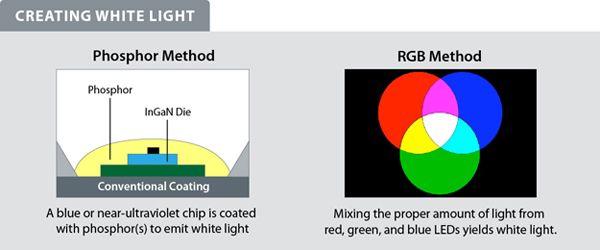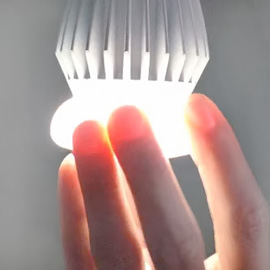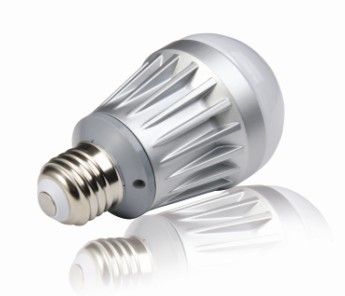| | |
|
| |
| | |
|

|
General LED FAQ

Unlike incandescent and fluorescent lamps, LEDs are not inherently white light sources. Instead, LEDs emit nearly monochromatic light, making them highly efficient for colored light applications such as traffic lights and exit signs. However, to be used as a general light source, white light is needed. White light can be achieved with LEDs in two main ways:
•Phosphor conversion, in which a phosphor is used on or near the LED to emit white light; and
•RGB systems, in which light from 3 LEDs (red, green, and blue) is mixed, resulting in white light. More Information on making white LED can be found in the pdf HERE

Quality Control Testing:
ORACLE Industrial Lighting products are designed harsh environments found in today's modern facilities. ORACLE Solid-State LED Lights are well engineered using the highest quality USA-Made components from Cree and Bridgelux and are manufactured to world-class quality standards. ORACLE residential, commercial, and industrial lighting offers end users reliability, exceptional quality and value.
The average lifetime rating of 50,000 hours continuous use will not only save users the cost of replacement bulbs and ballasts but also the high maintenance cost of physically changing out florescent tubes multiple times annually.
These lights are designed for professional daily use. ORACLE Industrial LED Lights have more even light distribution than the florescent lamp counterparts. As indicated by the ratio between the minimum and average Lux produced in the target zone.
LED Bulb Quick Facts:
It’s hard to imagine that light bulbs are important enough to spend very much time thinking about them. But what if you could cut down your lighting energy consumption by 80%, save a great deal of money on your energy bill every month and not have to think about changing a light bulb in your home for several years? That was certainly worth looking into!
Here are some quick facts and snippets of information to help you learn more about the latest generation of LED light bulbs. LED bulbs can be used in many common fixtures in your home, including accent lighting, track lighting, room lighting and outdoor spotlights. They offer many unique money and energy-saving benefits over traditional bulbs. LED bulbs have an exceptionally long lifespan. They can last up to 5 times longer than compact fluorescent (CFL) bulbs and much longer than traditional incandescent bulbs. A typical LED light that burns 8 hours a day can last about 17 years before it needs changing, making LED bulbs an ideal choice for hard-to-reach lights.
LED bulbs have no filament or any moving parts which makes them extremely durable and low maintenance.
LED bulbs generate almost no heat or UV, which can help reduce air conditioning costs in your home and help keep fabrics and furnishings from fading.
LED bulbs provide greater energy savings by using up to 80% less energy to produce the same amount of brightness as that of CFLs and incandescent bulbs.
Did You Know?
Government legislation has mandated that light bulbs must be 30% more efficient than conventional incandescent bulbs by 2014, and by 2020, all bulbs must be at least 70% more efficient.
NOT all LED Bulbs are Created Equal...
 
ORACLE Light Bulbs and built using the highest quality US made LEDs which have a longer lifetime averaging up to 50,000 hours. Industrial lifetime of LED Technology can be translated into a 10 to 15 year maintenance free life expectancy. In contrast, conventional lamps burn out after 3 to 5 years, incurring higher manpower and related maintenance costs for bulb replacement.
Why LED Lighting is here to stay:
The LED Light Bulb saves 90% energy, LED lights last longer up to 60,000 hours, LEDs are cool to touch, LED Bulbs are unbreakable, and LED Lighting saves time, money and the environment. Using a 3 Watt LED Light versus a 60 light bulb will save you $405.01 Per LED Bulb at 11¢ per kWh/60000hrs. If every U.S. household replaced just one standard 60 watt bulb with a LED Light bulb it could save 24,184.4 mega (million) watts per day. In an average household 15% of the electricity goes to light and the average home contains 20-30 bulbs. Incandescent bulbs have no energy efficiency, only 5 to 10% of the energy is converted into visible light and the rest is lost to heat. Solid state devices such as LEDs are subject to very limited wear and tear if operated at low currents and at low temperatures. Many of the LEDs made in the 1970s and 1980s are still in service today.
|

|
|